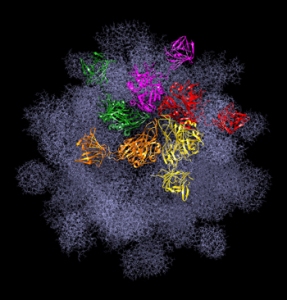Feb 7 2014
Rice University and the Gulf Coast Consortia will host an all-day symposium titled “International Year of Crystallography: Structure Matters” Feb. 14 at the BioScience Research Collaborative.
 CRYSTAL
CRYSTAL
Experts in X-ray crystallography – the technique scientists use to determine the structure of matter at very small scales – will discuss the significance of the technology and how it’s used to visualize the structures of proteins, a critical step in the design of drugs to fight disease.
Speakers include George Phillips, the Ralph and Dorothy Looney Professor of Biochemistry and Cell Biology at Rice; Yizhi Jane Tao, an associate professor of biochemistry and cell biology at Rice; Choel Kim, an assistant professor at Baylor College of Medicine; John Spence, the Richard Snell Professor of Physics at Arizona State University and director of science for the National Science Foundation (NSF) BioXFEL Science and Technology Center; and Stephen Burley, professor and director of the Center for Integrative Proteomics Research at Rutgers University.
The program will begin at 9 a.m. with poster presentations and science exhibits for high school students.
Crystallography is being recognized by the United Nations on the 100th anniversary of the awarding of Nobel Prizes to its discoverers, German physicist Max von Laue and the father-son team of William Henry and William Lawrence Bragg. Rice researchers led by Phillips are part of the NSF’s BioXFEL consortium, founded last year and based at the University of Buffalo, to explore the use of strong X-ray lasers to detail the atomic structures of molecules with a resolution approaching the nanoscale.
The symposium is open to the public and sponsored by the Gulf Coast Consortium (GCC) for Protein Crystallography, the Wiess School of Natural Sciences, the NSF BioXFEL Science and Technology Center and the Rigaku Corp.